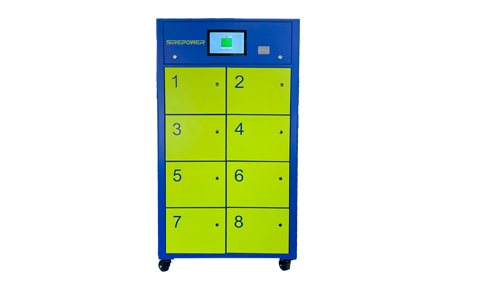Key steps for the construction of 2/3 wheel electric vehicle charging stations.
The construction of charging stations is a system engineering involving multiple links. The following are the key steps for the construction of charging stations:
1、 Preliminary planning and research
Market research
Requirement analysis: Understand the number of electric vehicles in the target area, growth trends, user charging habits, etc., and evaluate the charging demand.
Competitive analysis: Study the number, distribution, service types, pricing strategies, etc. of existing charging stations in the local area to identify market gaps and competitive advantages.
Policy environment: Understand the local government's support policies, subsidy standards, construction norms, etc. for charging infrastructure.

Site selection evaluation
Geographical location: Choose areas with convenient transportation, high pedestrian flow, and dense electric vehicle density, such as commercial districts, residential areas, transportation hubs, etc.
Land nature: Ensure that the selected land meets the requirements for building a charging station, such as land use, property ownership, etc.
Supporting facilities: Consider whether there are power grid access points, drainage systems, fire-fighting facilities, etc. in the surrounding area to ensure the feasibility of the construction and operation of the charging station.
Develop a plan
Charging station type: Determine the type of charging station based on demand and market research results (such as fast charging station, slow charging station, comprehensive charging station, etc.).
Equipment selection: Choose suitable charging equipment, considering factors such as charging power, compatibility, and safety.
Layout planning: Design the layout of the charging station, including the location, quantity, spacing of charging piles, as well as the planning of supporting facilities (such as rest areas, convenience stores, etc.).
2、 Project approval and filing
Submit application
Submit a project proposal for the construction of a charging station to relevant departments such as the local Development and Reform Commission and Housing and Urban Rural Development Bureau, including feasibility study reports, site selection opinions, land use certificates, and other materials.
Approval process
Waiting for relevant departments to approve the project, including environmental impact assessment, safety assessment, etc.
Obtain project approval documents or filing certificates to ensure the legality and compliance of the project.
3、 Design and Construction
Design phase
Entrust a professional design unit to carry out detailed design of the charging station, including electrical design, architectural design, fire protection design, etc.
Ensure that the design scheme complies with local construction regulations and safety standards.
Construction preparation
Apply for construction permits, form construction teams, and purchase construction materials and equipment.
Conduct safety education and training before construction to ensure construction safety.
Construction phase
Construct according to the design plan, including civil engineering, electrical installation, equipment debugging, etc.
Strengthen quality management and safety supervision during the construction process to ensure project quality and construction safety.
4、 Equipment procurement and installation
Equipment procurement
According to the design plan and actual needs, purchase key equipment such as charging piles, transformers, and distribution cabinets.
Choose suppliers with good reputation and reliable quality to ensure equipment performance and after-sales service.
Equipment installation
Install and debug the equipment by professional technicians to ensure its normal operation.
Conduct equipment trial operation and performance testing to promptly identify and resolve issues.
5、 Acceptance and operation preparation
Project acceptance
Invite relevant departments and experts to conduct acceptance of the charging station, including engineering quality acceptance, equipment performance acceptance, etc.
Ensure that the charging station meets the design requirements and relevant standards, and has the conditions for formal operation.
Operation preparation
Develop operational management systems and service standards for charging stations, clarify job responsibilities and operational procedures.
Recruit and train operational personnel, including charging operators, maintenance personnel, etc.
Develop charging pricing strategies and marketing plans to attract users to come and charge.
6、 Formal operation and maintenance
Formal operation
The charging station has officially been put into operation, providing charging services.
Strengthen user services and market promotion to increase the visibility and utilization of charging stations.
Equipment maintenance
Regularly maintain and upkeep charging equipment to ensure its normal operation.
Establish an emergency response mechanism for equipment malfunctions and promptly respond to user needs.
Data analysis and optimization
Collect and analyze operational data of charging stations, including charging capacity, number of users, charging time, etc.
Based on the data analysis results, optimize the operation strategy and service quality of the charging station.
Hot Keywords:
best ev charging companies
car charging station companies
EV fast charging







 WhatsApp Contact
WhatsApp Contact